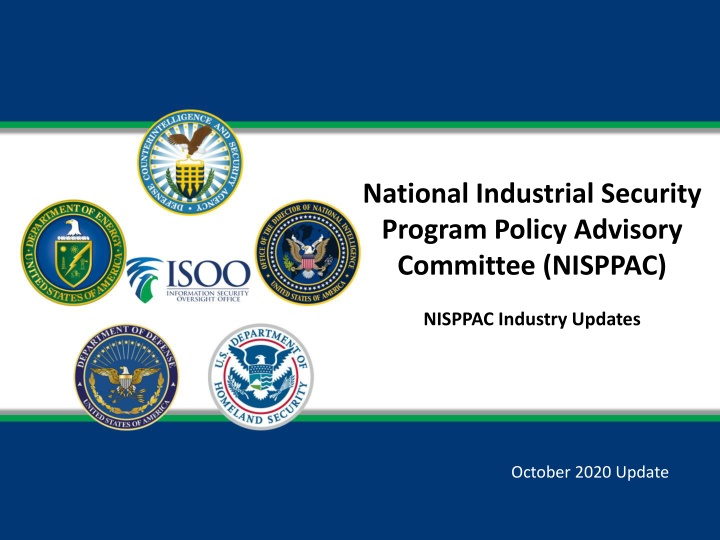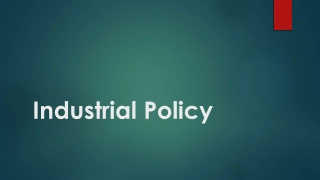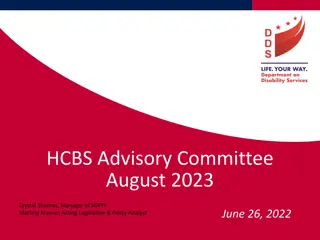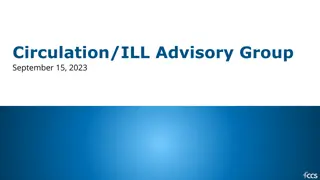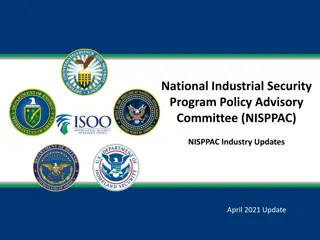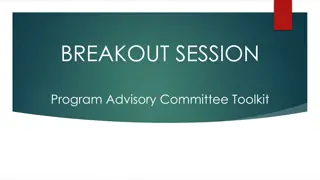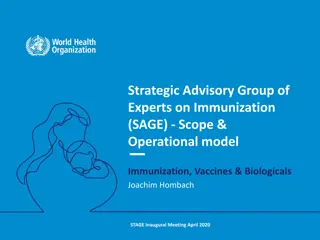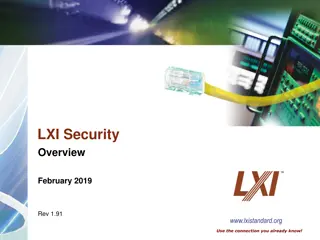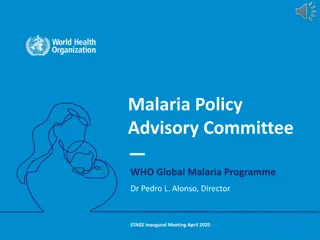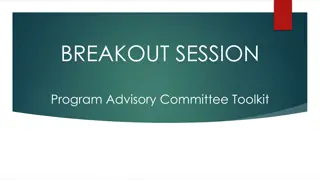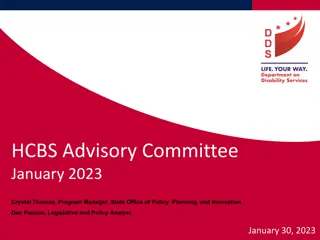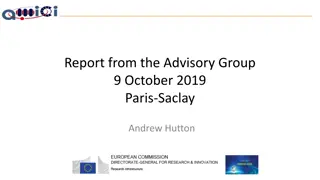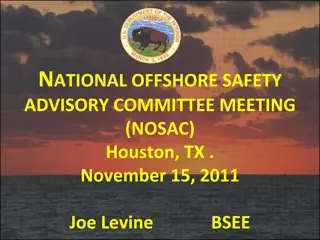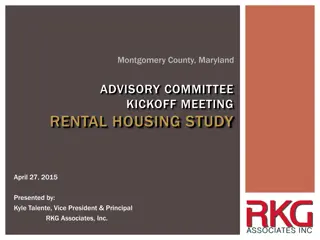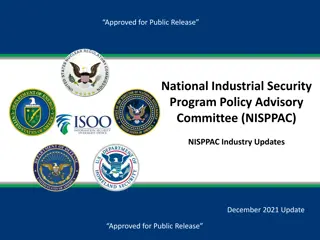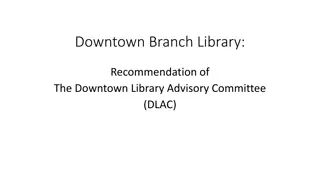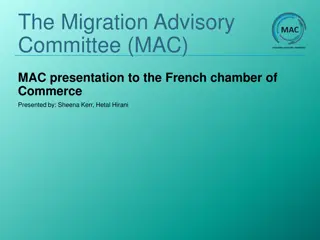National Industrial Security Program Policy Advisory Committee (NISPPAC)
National Industrial Security Program Policy Advisory Committee (NISPPAC) provides insights on NISP policies, member roles, working groups, Executive Orders 13891 and 13892, and National Level Policy Updates including NISPOM Rewrite and FAR changes.
Download Presentation

Please find below an Image/Link to download the presentation.
The content on the website is provided AS IS for your information and personal use only. It may not be sold, licensed, or shared on other websites without obtaining consent from the author.If you encounter any issues during the download, it is possible that the publisher has removed the file from their server.
You are allowed to download the files provided on this website for personal or commercial use, subject to the condition that they are used lawfully. All files are the property of their respective owners.
The content on the website is provided AS IS for your information and personal use only. It may not be sold, licensed, or shared on other websites without obtaining consent from the author.
E N D
Presentation Transcript
National Industrial Security Program Policy Advisory Committee (NISPPAC) NISPPAC Industry Updates October 2020 Update
NISPPAC 101 ESTABLISHMENT:The NISPPAC was created on January 8, 1993, by the President under Section 103 of Executive Order 12829, NISP" Functions: The NISPPAC members advise the Chair of the Committee on all matters concerning the policies of the NISP, including recommending changes to those policies as reflected in the Order, its implementing directives, or the operating manual established under the Order, and serves as a forum to discuss policy issues in dispute. 2
NISPPAC Members GOVERNMENT Mark Bradley, Chair ISOO TBD CIA Keith Minard/Matt Roche Jennifer M. Aquinas Air Force INDUSTRY Heather Sims, Spokesperson General Dynamics DCSA Aprille Abbott MITRE MOU Rosie Borrero ENSCO Kai Hanson Jonathan Fitz-Enz Joe Kraus Shawn Daley Kathy Pherson Greg Sadler Cathe Kaohi Michelle Sutphin Charles Sowell AIA *ASIS CSSWG FFRDC/UARC INSA *ISWG NCMS NDIA PSC Elizabeth A. Okane Army Derek Jones *MIT Lincoln Labs Richard Townsend Commerce Dan McGarvey Alion S & T Cobham AES *Mantech Jeff Spinnanger DOD Dennis Arriaga Mark Hojnacke Energy Tracy Durkin Michael J. Scott DHS Cheryl Stone RAND Corp. Christine E. Gunning DOJ Jennifer Obernier Navy Kimberly Baugher DOS Jessica Giguere, Northup Grumman Industry Coordinator Kenneth Jones NASA Bradley S. Weatherby Denis Brady NSA NRC Valerie Kerben ODNI 3
NISPPAC Working Groups Policy NISP Systems NISA Insider Threat Clearance FOCI
Executive Orders 13891 and 13892 President Trump signed two executive orders (EOs) aimed at curtailing agency abuses of guidance documents, which have been used to justify enforcement action against regulated entities despite not being produced through the same rulemaking process as proper regulations. Executive Order 13891 of October 9, 2019 titled, Promoting the Rule of Law Through Improved Agency Guidance Documents will make guidance more transparent, easier to find, and give regulated entities more opportunities to challenge potential violations. Executive Order 13892 of October 9, 2019 titled, Promoting the Rule of Law Through Transparency and Fairness in Civil Administrative Enforcement and Adjudication requires transparency. Regulated parties must know in advance the rules by which the Federal Government will judge their actions.
National Level Policy Updates NISPOM Rewrite and Companion Federal Rule Conforming Change 3 FAR NCCS FAR Clause- issued w/effective date of 8-2-2020 Draft ISLs DISS System of Record-w/DCSA pending updates Usage of EPL List and Crosscut Shredders-w/OSD GC SEAD 3-Adverse Information Reporting-w/OSD GC Insider Threat-w/DCSA GC Top Secret Accountability-Released from OSD GC 6
Security Executive Agent PACPMO-The Suitability and Security Clearance Performance Accountability Council (PAC) is responsible to the President for driving implementation of the Security and Suitability Reform Effort and for ensuring accountability by agencies, ensuring the Suitability Executive Agent and the Security Executive Agent align their respective processes and sustaining reform momentum. SECURITY vs SUITABILITY A security clearance investigation is an inquiry into an individual's loyalty, character, trustworthiness and reliability to ensure that he or she is eligible for access to national security information. EO 13467-"The Director of National Intelligence shall serve as the Security Executive Agent (SECEA). As the Security Executive Agent the Director of National Intelligence shall direct the oversight of investigations and determinations of eligibility for access to classified information or eligibility to hold a sensitive position made by any agency; shall be responsible for developing uniform and consistent policies and procedures to ensure the effective, efficient, and timely completion of investigations and adjudications relating to determinations of eligibility for access to classified information or eligibility to hold a sensitive position." A suitability investigation is an inquiry into a person's identifiable character traits and conduct sufficient to decide whether an individual's employment or continued employment would or would not protect the integrity or promote the efficiency of the service. The Director of the Office of Personnel Management shall serve as the Suitability Executive Agent. As the Suitability Executive Agent, the Director of the Office of Personnel Management will be responsible for developing and implementing uniform and consistent policies and procedures to ensure the effective, efficient, and timely completion of investigations and adjudications relating to determinations of suitability and eligibility for logical and physical access." 7
Security Executive Agent Directives (SEADs) SEAD 1: SECEA Authorities and Responsibilities SEAD 2: Use of Polygraphs-went through formal interagency review process at OMB and send back to ODNI for final approval/signature SEAD 3: Reporting Requirements for Personnel with Access to Classified-ISL Pending SEAD 4: National Security Adjudicative Guidelines- Implemented 6-8-2017 SEAD 5: Social Media usage in Investigations and Adjudications- Effective 5-12-2016 SEAD 6: Continuous Evaluation-Effective 1-12-2018 SEAD 7: Reciprocity- Effective 11-9-2018 SEAD 8: Temporary Eligibility-Effective 5-18-2020 All SEADs can be found here: https://www.dni.gov/index.php/ncsc- how-we-work/ncsc-security-executive-agent/ncsc-policy 8
Biggest Industry Impacts Industry NISP Priorities Personnel Security Reform/Trusted Workforce 1.2/1.5/2.0 Transfer of Trust (Reciprocity) 2021 NDAA Section 9403-Information Sharing Continuous Monitoring (CE) Supply Chain Risk Management/Delivering Uncompromised NDAA Section 889-Bars agencies from procuring, obtaining, or extending or renewing a contract to procure or obtain equipment or a system, or service that uses telecommunications equipment or services of certain Chinese entities. (industry needs one common list from the government) NDAA Section 847-Mitigating risks related to foreign ownership, control, or influence of Department of Defense contractors or subcontractors (Uncleared DIB) NDAA Section 842 Elimination of the NID requirement for covered National Technology and Industrial Base (NTIB) effective 10-1-2020 New and Emerging Gov t Oversight CMMC Operation Warp Speed/RISO/DIT? Operating under COVID Risk Acceptance Letters for Closed Areas and Program Close Outs Continuous Monitoring Engagements and Beyond
Other Industry Concerns or Quesitions JPAS to DISS Transition JPAS Training Certificate from CDSE Data Functional Concerns/Training Mandated training outside contractual requirements DoD OPSEC Training for on-site contractors And many more! Industry s Implementation of NCCS SCIF/SAPF Co-Utilization FedEx/USPS Classified Deliveries RD/FRD Training MFO and 254 Relationships
NISP System Updates What s next? eQIP NISS SWIFT eAPP JPAS DISS E-FOCI 11
Industry in Crisis and The Risk of the Unknown How will all the changes affect our supply chains? What can we expect from an oversight perspective in the future? How can we relay issues of duplication of NISP processes? Each new process asked of industry adds additional administrative and resource burdens taking us away for real risk management and security responsibility. Industry needs to be united in voice and action on the strategic issues 12
Industry NISPPAC on the Web https://classmgmt.com/nisppac.php https://classmgmt.com/nisppac.php Industry NISPPAC by email nisppacindustry@gmail.com
Where do we go from here? Industry engagement at all levels and often Identify issues quickly and partner w/Gov t Industry unity in government communications Too many issues---Not enough time!!! NISPPAC needs to focus strategically. What are the Top 2-3 Industry Issues? Don t suffer in silence-Bring Issues forward BESIDES THAT, HOW ARE THINGS GOING? 14
QUESTIONS ???
